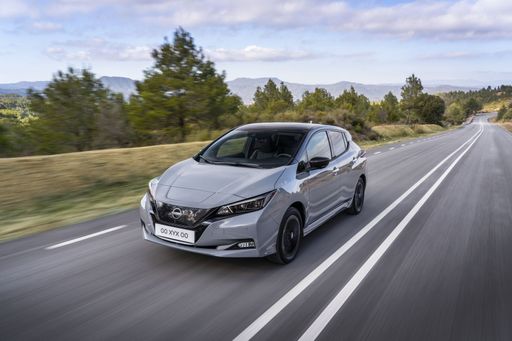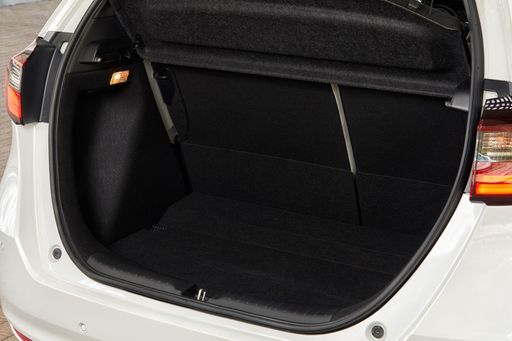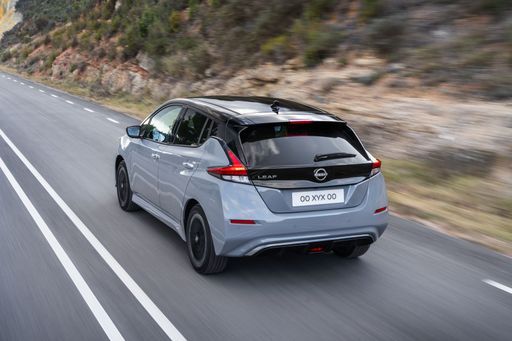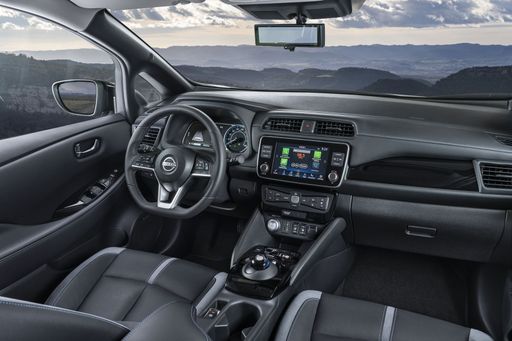Honda Jazz vs Nissan Leaf – Which model is better for everyday use?
Compare performance, boot capacity, efficiency and price at a glance.
Find out which car is the better choice for you – Honda Jazz or Nissan Leaf?
Costs and Efficiency:
Price and efficiency are key factors when choosing a car – and this is often where the real differences emerge.
Honda Jazz has a noticeable advantage in terms of price – it starts at 23100 £, while the Nissan Leaf costs 30800 £. That’s a price difference of around 7671 £.
Engine and Performance:
Power, torque and acceleration say a lot about how a car feels on the road. This is where you see which model delivers more driving dynamics.
When it comes to engine power, the Nissan Leaf has a clearly edge – offering 217 HP compared to 122 HP. That’s roughly 95 HP more horsepower.
In acceleration from 0 to 100 km/h, the Nissan Leaf is distinct quicker – completing the sprint in 6.90 s, while the Honda Jazz takes 9.40 s. That’s about 2.50 s faster.
In terms of top speed, the Honda Jazz performs slightly better – reaching 175 km/h, while the Nissan Leaf tops out at 157 km/h. The difference is around 18 km/h.
There’s also a difference in torque: Nissan Leaf pulls evident stronger with 340 Nm compared to 253 Nm. That’s about 87 Nm difference.
Space and Everyday Use:
Beyond pure performance, interior space and usability matter most in daily life. This is where you see which car is more practical and versatile.
Both vehicles offer seating for 5 people.
In curb weight, Honda Jazz is evident lighter – 1302 kg compared to 1580 kg. The difference is around 278 kg.
In terms of boot space, the Nissan Leaf offers clearly perceptible more room – 394 L compared to 304 L. That’s a difference of about 90 L.
In maximum load capacity, the Honda Jazz performs clearly perceptible better – up to 1205 L, which is about 415 L more than the Nissan Leaf.
When it comes to payload, Nissan Leaf minimal takes the win – 415 kg compared to 388 kg. That’s a difference of about 27 kg.
Who wins the race?
The Nissan Leaf proves to be is largely superior and therefore becomes our DriveDuel Champion!
Nissan Leaf is the better all-rounder in this comparison.
 @ Nissan Motor Corporation
@ Nissan Motor Corporation
Nissan Leaf
Honda Jazz
The Honda Jazz is a supremely practical small hatch that hides clever packaging and more usable space than it lets on, with friendly styling and an unfussy charm. It’s economical to run, easy to park and perfect for buyers who want reliable, versatile daily motoring without the hassle.
details @ Honda Motor Co., Ltd.
@ Honda Motor Co., Ltd.
 @ Honda Motor Co., Ltd.
@ Honda Motor Co., Ltd.
 @ Honda Motor Co., Ltd.
@ Honda Motor Co., Ltd.
 @ Honda Motor Co., Ltd.
@ Honda Motor Co., Ltd.
 @ Honda Motor Co., Ltd.
@ Honda Motor Co., Ltd.
Nissan Leaf
The Nissan Leaf is a practical, easygoing electric hatch that turns daily commutes into a quiet, effortless affair while offering more cabin space than it lets on. It’s a sensible, wallet-friendly step into electrification for buyers who value comfort and simplicity over sporty drama, though those chasing long-distance thrills might look elsewhere.
details @ Nissan Motor Corporation
@ Nissan Motor Corporation
 @ Nissan Motor Corporation
@ Nissan Motor Corporation
 @ Nissan Motor Corporation
@ Nissan Motor Corporation
 @ Nissan Motor Corporation
@ Nissan Motor Corporation
 @ Honda Motor Co., Ltd.
@ Honda Motor Co., Ltd.
|
 @ Nissan Motor Corporation
@ Nissan Motor Corporation
|
|
|
|
Costs and Consumption |
|
|---|---|
|
Price
23100 - 26700 £
|
Price
30800 - 37200 £
|
|
Consumption L/100km
4.5 - 4.8 L
|
Consumption L/100km
-
|
|
Consumption kWh/100km
-
|
Consumption kWh/100km
16.7 - 17.8 kWh
|
|
Electric Range
-
|
Electric Range
270 - 385 km
|
|
Battery Capacity
-
|
Battery Capacity
39 - 59 kWh
|
|
co2
102 - 108 g/km
|
co2
0 g/km
|
|
Fuel tank capacity
40 L
|
Fuel tank capacity
-
|
Dimensions and Body |
|
|---|---|
|
Body Type
Hatchback
|
Body Type
Hatchback
|
|
Seats
5
|
Seats
5
|
|
Doors
5
|
Doors
5
|
|
Curb weight
1302 - 1320 kg
|
Curb weight
1580 - 1756 kg
|
|
Trunk capacity
304 L
|
Trunk capacity
385 - 394 L
|
|
Length
4089 - 4105 mm
|
Length
4490 mm
|
|
Width
-
|
Width
1788 mm
|
|
Height
1526 - 1556 mm
|
Height
1540 - 1545 mm
|
|
Max trunk capacity
1205 L
|
Max trunk capacity
790 L
|
|
Payload
370 - 388 kg
|
Payload
384 - 415 kg
|
Engine and Performance |
|
|---|---|
|
Engine Type
Full Hybrid
|
Engine Type
Electric
|
|
Transmission
Automatic
|
Transmission
Automatic
|
|
Transmission Detail
CVT
|
Transmission Detail
Reduction Gearbox
|
|
Drive Type
Front-Wheel Drive
|
Drive Type
Front-Wheel Drive
|
|
Power HP
122 HP
|
Power HP
150 - 217 HP
|
|
Acceleration 0-100km/h
9.4 - 9.7 s
|
Acceleration 0-100km/h
6.9 - 7.9 s
|
|
Max Speed
175 km/h
|
Max Speed
144 - 157 km/h
|
|
Torque
253 Nm
|
Torque
320 - 340 Nm
|
|
Number of Cylinders
4
|
Number of Cylinders
-
|
|
Power kW
90 kW
|
Power kW
110 - 160 kW
|
|
Engine capacity
1498 cm3
|
Engine capacity
-
|
General |
|
|---|---|
|
Model Year
2023
|
Model Year
2019
|
|
CO2 Efficiency Class
C
|
CO2 Efficiency Class
A
|
|
Brand
Honda
|
Brand
Nissan
|
Is the Honda Jazz offered with different drivetrains?
The Honda Jazz is offered with Front-Wheel Drive.
The prices and data displayed are estimates based on German list prices and may vary by country. This information is not legally binding.
